The Best 3 Diets That Will Help You Get Healthy!
In this article, you will learn how to lose weight by crafting a lifestyle that will make you happy: Healthy mind, healthy body.
So you might be wondering how to lose weight!
Each of us has expectations from our family, friends, and from life in general. These expectations can be met with the right knowledge and the will to put it into practice. However, one needs to be aware that expectations generally come with certain disappointments, and to actually change something about yourself, you need to find the motivation to act NOW. Because sooner is better than later. You need to establish if making a change is URGENT for you or if it’s just on the “To Do” list.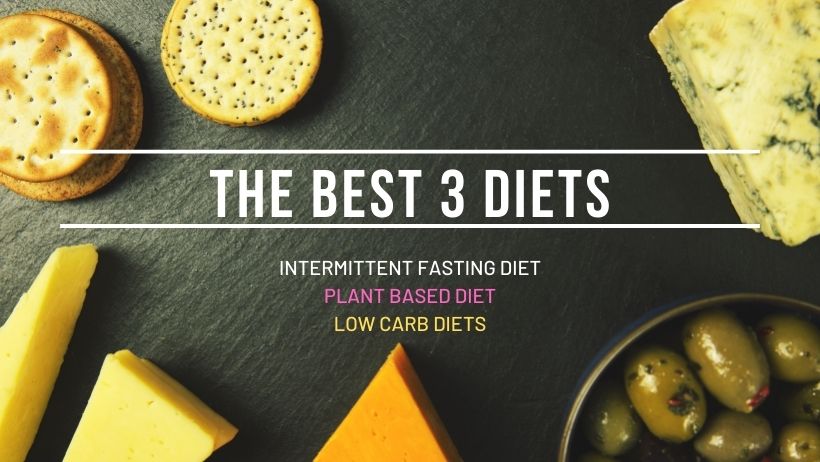
Life nowadays can be extremely hectic and this sort of messy lifestyle, always on the run, can make it quite difficult for us to think about the small choices we make daily. We often sacrifice a lot in terms of life quality and care to just meet that target and make more money. While money is important, our lives are way more important and we need to take care of our health.
Most health issues for around half the planet’s population relates to weight loss with adults especially always being on the lookout for that special, miraculous diet that will solve their problems like magic. Sadly, that is not how things work. Most people just give up after investing minimal time and effort when it comes to a weight loss program. Most of their information comes from wrong sources that have no real basis provided by studies. These erroneous weight loss programs do not have logic at their core and this causes a small fraction of people to follow up on real facts from real sources to help them live a healthy, natural life without any doctors or drugs.
If you are still with me, I congratulate you on taking the first step on your weight loss journey. It may prove difficult at times but help is on the way. To lose weight you have to change the way you think, you have to organize yourself and choose a DIET that will define your lifestyle. To further add to this point I will present 8 diets that will help and motivate you to start with an efficient plan that suits you best.
I know that there are dozens of diets and many of them contradict one another. While some want to convince you they will reduce your appetite, others advise you should take care of the number of calories you take in, mostly carbohydrates and fats. Most try to convince that the latter option is the best way to gain more benefits in terms of weight loss, getting in shape, and basically have a champion’s state of health.
Let’s start with the top 8 weight loss plans to incorporate into your diet. It is guaranteed that these will catapult you to your ideal weight but you will also feel reborn, healthwise.
1. Intermittent Fasting Diets
The Intermittent Fasting Diet is quite famous and some know it as Intermittent Fasting.
How to lose weight with the intermittent fasting diet?
It is the trendiest diet in the US, made famous by most actors and lifestyle influencers. This means millions of people have chosen this diet as a lifestyle, a contributing factor that makes it one of the most efficient diets at this moment in time.
The Intermittent Fasting Diet Based On 3 Circadian Cycles
The efficiency of intermittent fasting is based on the circadian cycles. The diet employs logic based on biological facts. If you understand these, you’re pretty much set.
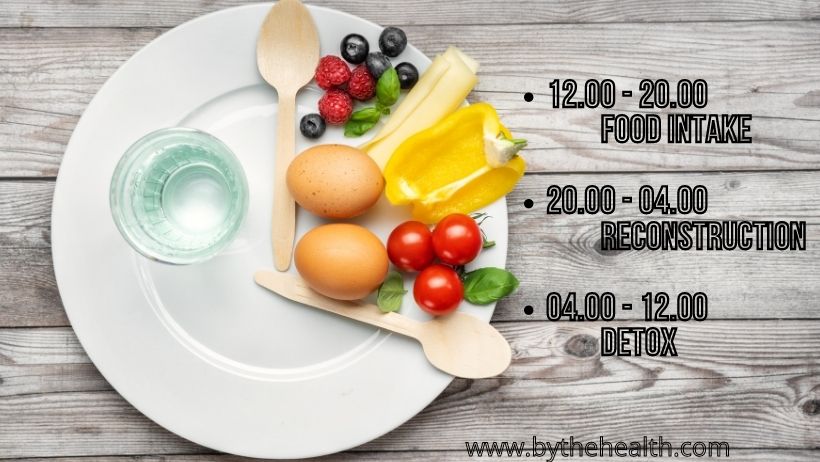
Circadian cycle #1 – 12.00 – 20.00 – Food Intake
In this stage you fuel the body with the nutrients it needs as most of its functions related to digestion and colon absorption are active.
Circadian cycle #2 – 20.00 – 04.00 – Reconstruction
In this stage, the body is busy rebuilding itself for the next day. It is the optimal time for the body to regenerate if you actually let it perform this function without applying any extra stress. This means that you should not eat any food during this time that will reactivate the digestion process.
It is recommended that your last meal should take place up to 19.00. Ideally, this meal should be lighter to help the body digest it faster, allowing it to pass through the colon, activating the absorption process.
Circadian cycle #3 – 04.00 – 12.00 – Detox
This is the detox cycle where the body is programmed to enhance toxin elimination. Meaning the metabolic leftovers from the digestion from the previous stages. The overall cycle is finalized, you go to the bathroom and your system is empty, ready to start again.
-
Intermittent Fasting Diet – 5/2 Day Ratio
It’s surprising how most religious cults somehow recommend the 5/2 intermittent fasting. This practice has been present in various societies around the world for thousands of years. It certainly helps with attaining a healthier lifestyle and probably helps you evolve spiritually.
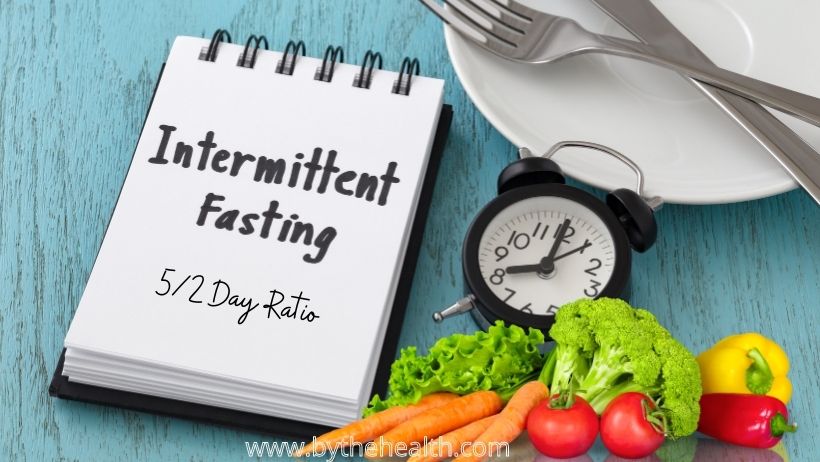
This variant of intermittent fasting splits the 7 days in the week to a 5/2 ratio. During those 5 days, you can freely consume food without looking too much at the calories. During the designated 2 days the food intake should be very low in calories, coming in at around 5-6 hundred calories per day but fries are not an option here as they are toxic as well as true calory bombs. To ensure optimum health and efficiency these 2 days should not be consecutive. The Christian fast takes place Wednesday and Friday for example.
I previously stated that you can freely consume calories during the 5 days of the diet, however, I forgot to mention that this only relates to Healthy Foods. Your body still has limits in terms of digestion and absorption, even if you feed it proper food. So the secret is not to push it too far.
-
Intermittent Fasting 16/8 Hour Ratio
There are many variants of intermittent fasting but let’s mention the 16/8 hour variant. This form of the diet splits the 24 hours in a day into 2 parts.
The 16 hours are reserved for the body to take a break from eating. Instead, it busies itself with reconstruction, detoxing, and eliminating waste. The 8 hours are meant for refueling where the body will handle food intake, digestion, and absorption.
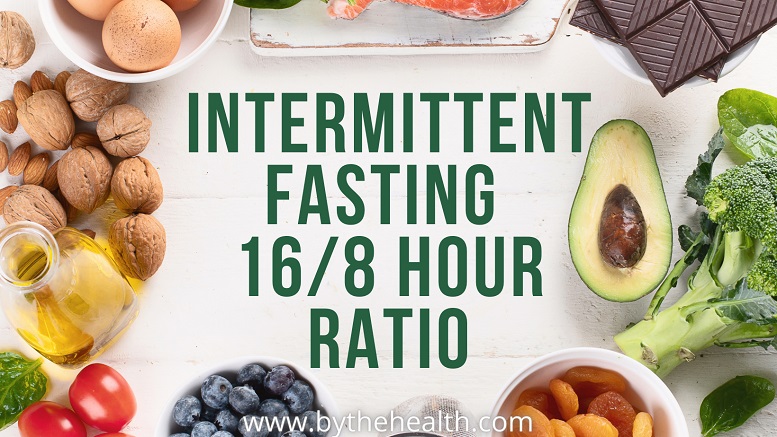
Rules To Make Intermittent Fasting Efficient:
- You can consume pretty much whatever you want in the 5/2 diet, even if you are not fasting in the 5 days, without enlarging your overall intake.
- Daily hydration is very important especially because the body contains over 70% water. It is extremely important at a cellular level as it helps immensely with detoxing.
- To obtain good results it is recommended to avoid foods with a very high amount of calories. Dairy especially, as it strongly congests your lymphatic system. Processed items, fast food, pastries, and sweets should also be avoided.
- Physical exercise helps with burning calories, and muscle toning but it also serves as the pump that drives the lymphatic system. Without movement, this waste disposal system cannot function properly as it does not have an internal mechanism to power it.
To conclude, intermittent fasting has limitless benefits and it can fit in your lifestyle without much of a strain. There are studies that support the benefits it provides, other than weight loss. Benefits such as anti-aging, improved brain health, reducing inflammation by reducing acidic PH, and also sustaining muscle mass just to name a few. All these benefits deserve their own article to do them justice.
2. Plant Based Diets
It’s no secret that diets based on plants, legumes, fruits, and seeds have been gaining more and more followers in the last few years. This is due to some of the evidence coming out that marks it as a valid nutrition option for those who are “pro-life”.
How to lose weight with a plant based diet?
Starting with the early 2000s, the consumption of dairy has fallen by more than 30%. New studies have marked the main protein found in milk, casein, as favoring the development of cancer but also accelerating type 1 diabetes and multiple sclerosis.
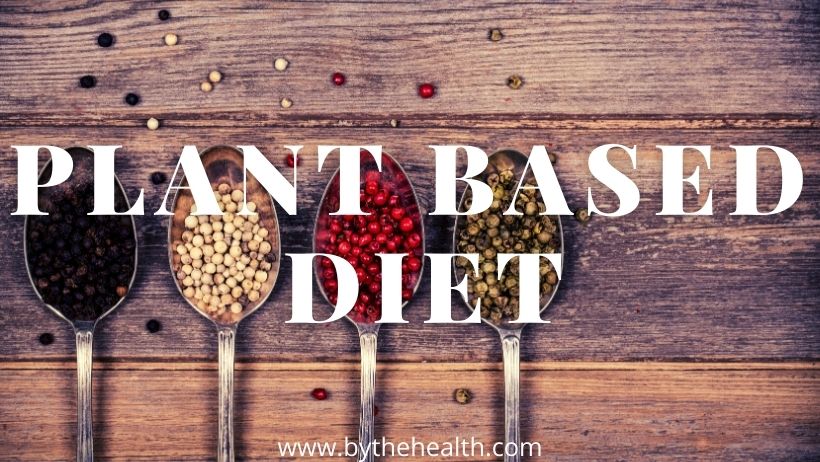
More and more people that want a healthier lifestyle have replaced dairy products that originate from animals with things such as coconut, almond, and oat milk.
Studies conducted across the world say that over 40% of consumers have augmented their consumption of legumes and more than 70% of people have reduced their meat intake in the last couple of years. Read meat, as well as processed meat, were on the top of that list.
This plant based diet variant is a lifestyle that will certainly help you lose weight. The benefits do not stop there as this diet will also give the body the antioxidants, amino acids, minerals, and vitamins it needs to regenerate itself.
The 2 most famous plant based diets are vegetarianism and veganism. These are diets that ignore animal foods in varying degrees and look for nutrition elsewhere. This means no meat, dairy, or eggs for adepts of these diets. People also believe there is a moral aspect involved when it comes to animal lives but they also make the argument that plant based diets help the environment as a lot of pollution comes as a result of animal husbandry.
Animal based foods require a lot of energy to digest. A byproduct of this type of consumption is that the body needs to deploy more potent acids in the stomach to properly break down these foods. This process is more complicated and lengthier than breaking down plan based foods. (2)
– Acidic environment in nutrition based on animal based foods
– Alkaline environment in nutrition based on plant based foods
-
Flexitarian Diet
There are choices other than the strict plant based diets such as the flexitarian diet which is still based on vegetables. However, it allows for the consumption of animal based products in moderation.
The flexitarian diet is meant for people that would like to be vegetarian. These people generally want a healthy lifestyle but cannot completely separate themselves from meat especially.
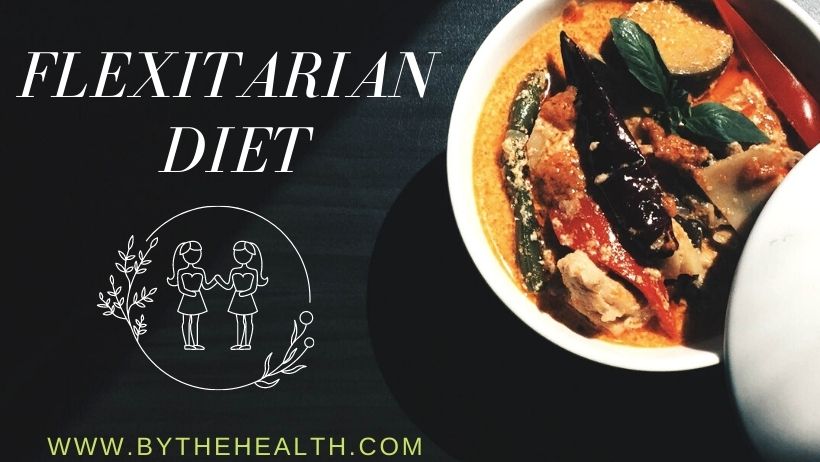
Dawn Jackson Blanter writes in her book, “The Flexitarian Diet”, about a new style of nutrition. Vegetarian wannabes have their own category now as flexible consumers that occasionally eat meat and fish.
Unlike the vegetarian or raw vegan diet, flexitarians do not have to be subjected to strict rules about what they eat. This diet provides its followers with the flexibility of eating prime meat that is sourced from grass fed cows that are allowed to roam around freely. However, the diet recommends eating as many fruits, seeds, and legumes as possible. Ultimately, you are not restricted from eating certain things, you are just advised to focus on quality rather than volume.
The conclusion is that the flexitarian diet has not rules that actually constrict your mind. Once again, it merely promotes the consumption of certain foods over others, such as fruits, legumes, and gluten free whole grains while still allowing for animal based product consumption. This makes the flexitarian diet a lifestyle that is quite accessible and easy to follow.
-
Vegetarian Diet
The vegetarian diet is for the bolder person because it does not allow for the consumption of animal based products like the flexitarian diet does. In fact, it excludes all of these products from daily use. Not only that, but animal byproducts such as gelatin, whey, casein, and albumin are also prohibited.
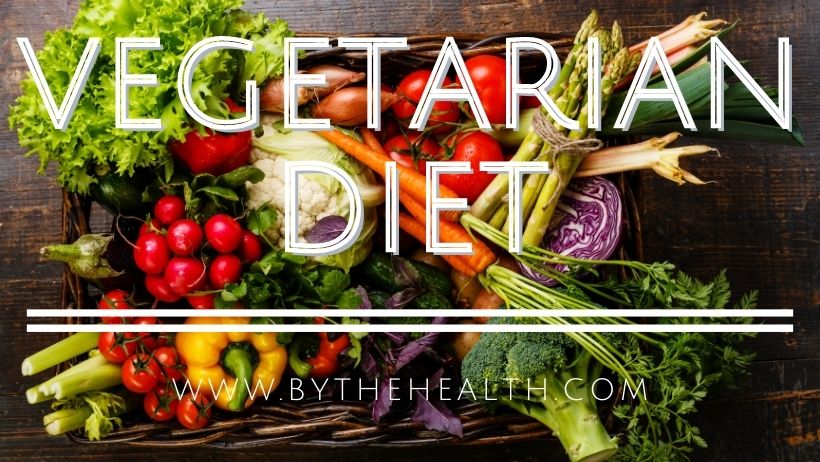
There are 1000 people study groups that showcased superior weight loss with people that followed the vegetarian diet rather than the flexitarian diet. The weight loss difference was between 2-3 kilograms.
Diets that are based on plant consumption come with many other benefits than just superior weight loss. These types of diets reduce the risk of heart disease but also prevent cancer and diabetes.
3. Low Carb Diets

Diets that promote the consumption of a low amount of carbohydrates are among the most popular among people that want to lose weight, gaining a lot of traction among the people that adhere to the mantra:
Healthy mind, healthy body.
-
Atkins Diet
The Atkins diet has 4 stages that form its core. Drinking lots of water is a major component of the diet, with the consumption of a minimum of 1.5 liters per day being mandatory. 30 minutes of daily physical exercise is also mandatory for Atkins followers.

Induction Stage
Here, the body learns to adapt to the low amount of carbs present in your system as you can only consume 20 grams per day. The challenge is that only some legumes have a low carb count. The induction stage will focus on protein consumption such as beef, chicken, fish, eggs, vegetable oils, and butter.
Constant weight loss stage
This is a stage that is larger by comparison and needs to be maintained until the ideal weight is reached. Weight loss is constant here, at around 1 kilogram per week. The first stage also needs to be considered in the calculation you make, based on how many kilos you wish to lose.
If you would like to lose 8 kilos, it will take you 6 weeks if you already lost 2 in the first stage. The constant weight loss stage will see a 5-gram increase in carbohydrate intake, so you are looking at a total of 25 grams per day, making the quantity of salad you eat increase. A bonus is that berries or apples can be consumed 2-3 times per week, as well as nuts and seeds. However, these would ideally be hydrated, meaning keeping them in water 8 hours before consumption. This applies to Brazil nuts and pecan nuts, hazelnuts, almonds, peanuts, pumpkin seeds, cashews, sunflower seeds, and pine buds.
Balancing stage
Once the ideal weight has been reached the constant weight loss stage can be passed. Now, you need to focus on balancing your metabolism. The body needs to learn how to deal with its new weight so it can be maintained.
This stage is fragile because you may relax your diet causing a boomerang effect where you go back to your initial weight, making all your work be for nothing as well as causing nutritional unbalance.
The balancing stage will see another 5-gram increase in carb intake so prepare yourself for even more salad. Your weight needs to be monitored daily because it needs to stay the same. If the weight increases then you would need to resume the previous stage for another 3 weeks.
Maintenance stage
This is basically an extension of the balancing stage but you will see a gradual increase in carb intake but the total amount should not exceed 80 grams per day. The maintenance stage will also come with an increase in the consumption of fruits and seeds. These will be eaten daily and as a bonus, 2-3 squares of black chocolate will be added 2 times per week.
-
Ketogenic or Keto Diet
The Keto diet is already enjoying success and has become well known as a result. This diet is based on a simple calculation where you need to split your daily food quantity into these percentages:
65% Healthy Fats ( no fast food or fried stuff )
30% Protein
5% Carbohydrates

The Attack Stage
This stage will see the 3 main meals of the day be replaced by a 4 meal system. In ideal circumstances, the first one should be around 8 AM, the second at 11.30, the third at 15.00 at the last one at 18.30. This stage will have participants consume 500 calories less than in the following stage. This is done to force the body to burn more stored fats. All of this should take a maximum of 2 weeks with men consuming 2000 calories max, and women 1500.
Maintenance stage
This stage is similar to the previous stage but the calorie intake will be increased by 500 as previously noted, coming in at 2500 calories for men, and 2000 for women. You will able to add 1 or 2 slices of whole bread per week here.
The maintenance stage should be held until the ideal weight is reached but no more than 1 month. Water is a crucial part, as with the Atkins diet and the Keto Diet, so that 1.5-liter amount needs to find its way into your body.
You cannot go wrong by adding green, black tea, or even coffee to the mix but don’t go crazy with those. Exercise also has an important part to play in the Keto diet due to the high amount of calories you can burn with all sorts of gym-related cardio activities.
-
Low Carb High Fat Diet Or LCHF
The LCHF considerably reduces your carbohydrate intake, raising protein, and fat consumption significantly. The thinking behind the diet is that proteins are better at giving you the sensation of a full stomach. Therefore, reducing your appetite, raising the metabolic rate, raising energy consumption, and helping maintain muscle mass at the same time.
This diet stands out by the low carb intake and this forces the body to generate energy by consuming fatty acids as an alternative. This process is called ketosis, the metabolic process where the body is forced to burn fat because it is deprived of the sugar found in carbs.
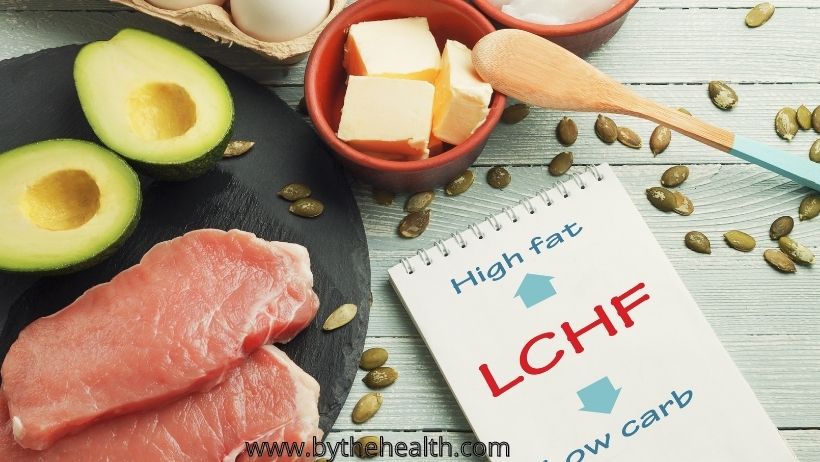
Studies show that the Keto diet, the Atkins diet, and the LCHF diet, all of which focus on a low carb intake, can generate weight loss, and burn fat in a more efficient way than low fat diets. However, one side effect is that low carb diets can cause gout in some people due to the high level of uric acid present in the body.
Diets that have a low amount of carbohydrates can raise the level of LDL cholesterol. This is due to the pressure put on arterial walls by low-density lipoproteins, which is bad cholesterol. This can cause blood vessel coagulation as well as heart disease.
Low carb diets are also proven to cause issues with the digestion process due to the sluggishness of protein breakdown. PH levels are affected and potent acids need to be deployed in the stomach to break down the proteins.
Some low carb diet adepts have been known to get an affliction called diabetic ketoacidosis (CAD). If left untreated, it can cause a diabetic coma and even death.
Conclusion:
The now-famous low carb diets are based on severely decreasing the amount of carb intake which will force the body to come up with alternatives. It needs to create energy to sustain itself, often leaning on burning fat as a solution.
These diets will help with weight loss by burning fat but you need to be aware of the possible side effects. Due to the harmful nature of these side effects, low carb diets cannot be labeled as healthy lifestyles.
Each person should consider their priorities and make certain choices based on those. If losing weight is high on that list then going towards intermittent fasting is probably the best plan. Not only has it been applied in religious cults over thousands of years, but it is also the only type of diet that encourages the consumption of a vast array of foods found in nature.
Tips For A Healthy Lifestyle:

- Start the day by avoiding useless stress, find a smile inside yourself, and think about what would you do if it were your last day on Earth?
- Hydration should be a priority when you wake up. You should take small sips of water, around 500 ml in total. The brain needs glycogen which is produced by the liver. In turn, it needs water to perform its task and send that to the brain.
- Eat as many fruits as you can until 12 PM, the brain loves simple sugars and they will also increase your energy levels.
- You’re the boss at lunch so you make the decisions. However, you should try to avoid combining animal products with complex carbohydrates. That mix will strain your digestive system, taking longer to complete.
- Water is key. You should consume 33-35 ml of water per kilo, so an 80 kg person should have a 2.64-kilo daily intake of water, 3 kilos to round it up. Take small sips though as you do not need extra pressure on the kidneys and bladder.
- Leave some room between meals, wait for the evening to come without having a meal or even a snack. This way, you will allow the body to focus on more important tasks. Take blood into account. Your body has around 7 kilograms of the stuff and the brain needs around 20 percent of that amount, this cannot be avoided. Why is this important? There is still enough to go around. Right? That may be true, however, once the digestion process is activated, that takes up 60 percent of the amount of blood in the body, leaving an individual with the remaining 20 percent of the total. The remaining blood needs to travel around 50-100 thousand kilometers in a matter of minutes to feed each cell in the body, otherwise, they would die.
- Eat fasting foods in the evening to keep digestion short so you can give your body a break.
- Try going to bed before 22.00. This means that your pineal gland has an easier job releasing melatonin. This is the sleep hormone that plays a key role in activating the reconstruction stage of the body. It cannot be released if you eat a “wonderful” pizza that will keep your body busy with digestion for the next 12 hours or so, leaving you deprived of a complete daily reconstruction.